Yes, I'm hungry.
A female praying mantis is perched upside down in our pollinator garden. She has maintained this position in the verbena over a four-day period, enduring temperatures that soar to 105 degrees.
The mantis, a Stagmomantis limbata (as identified by praying mantis expert Lohit Garikipati of UC Davis) remains persistent, even as the temperature gauge spikes and the insects vanish.
Then on Saturday afternoon, we notice a few honey bees and Valley carpenter bees buzzing around her, and Gulf Fritillary butterflies and skipper butterflies fluttering next to her.
The predator and the prey. The hunter and the hunted. Will she be a successful hunter today? No, not today. Maybe tomorrow.
On Sunday morning, with the temperature hovering at 80 degrees, it happens. A sluggish honey bee makes the fatal mistake of nectaring on a blossom next to her.
Bad day for the honey bee; good day for the mantis. The mantis grabs the bee with her spiked forelegs, clutching it firmly, and begins to eat.
Freeloader flies, Milichiidae (probably genus Desmometopa), arrive too late to partake in the meal.
Ms. Mantis, now nourished, scales a verbena stem.
Am I hungry? Well, I can still eat a bite.
Attached Images:
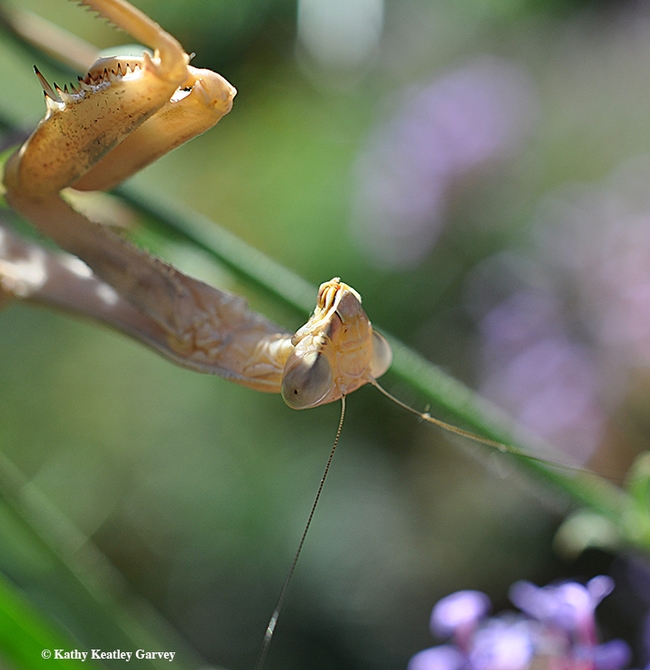
A female praying mantis, a Stagmomantis limbata (as identified by Lohit Garikipati of UC Davis) is looking for prey. (Photo by Kathy Keatley Garvey)
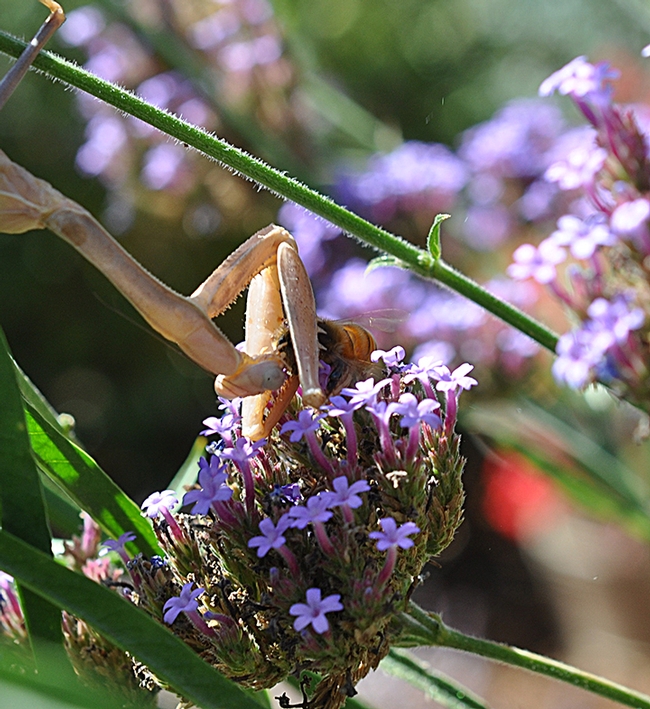
Seconds later, the praying mantis nails a honey bee. (Photo by Kathy Keatley Garvey)
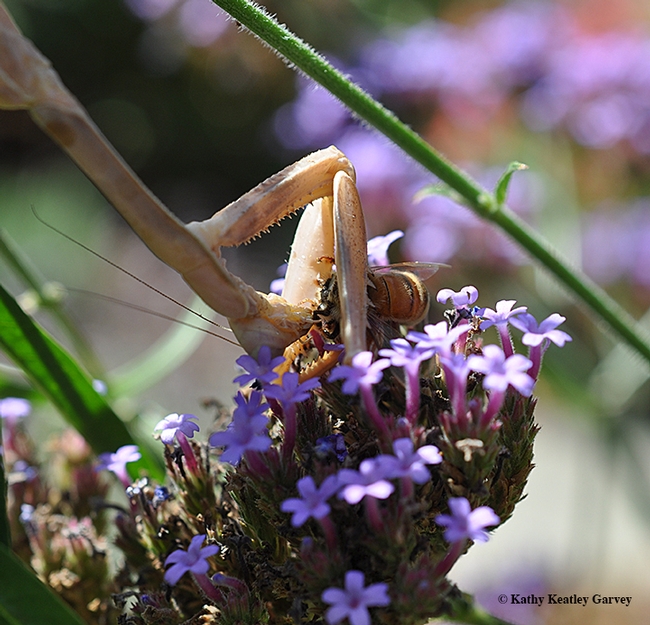
The praying mantis, Stagmomantis limbata, begins to eat. (Photo by Kathy Keatley Garvey)
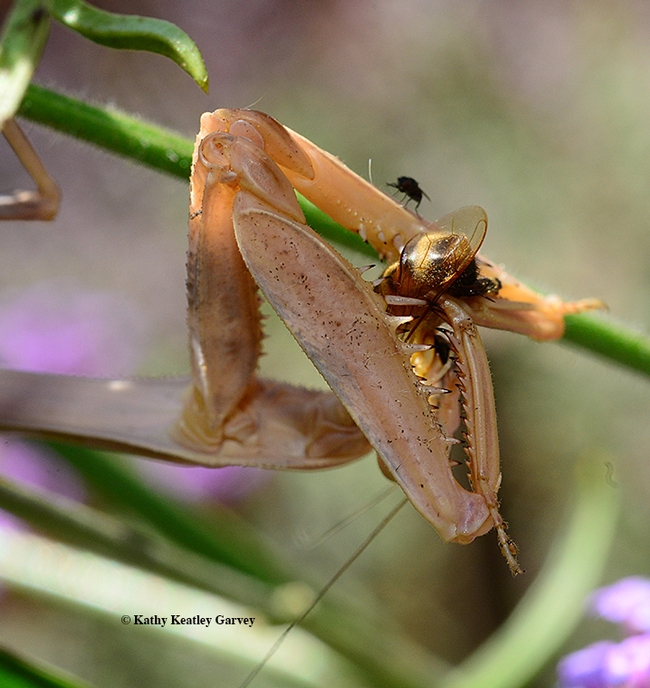
A freeloader fly, (family Milichiidae and probably genus Desmometopa) perches on a spiked foreleg. (Photo by Kathy Keatley Garvey)
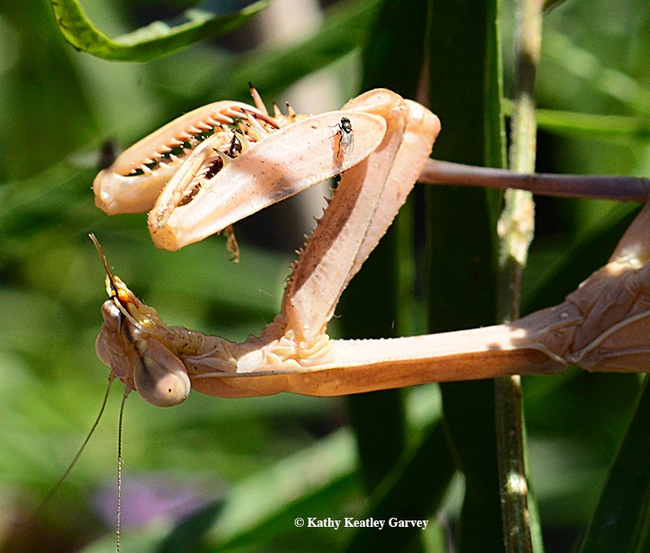
The praying mantis eats the last of her prey, while the freeloader fly is out of luck. (Photo by Kathy Keatley Garvey)
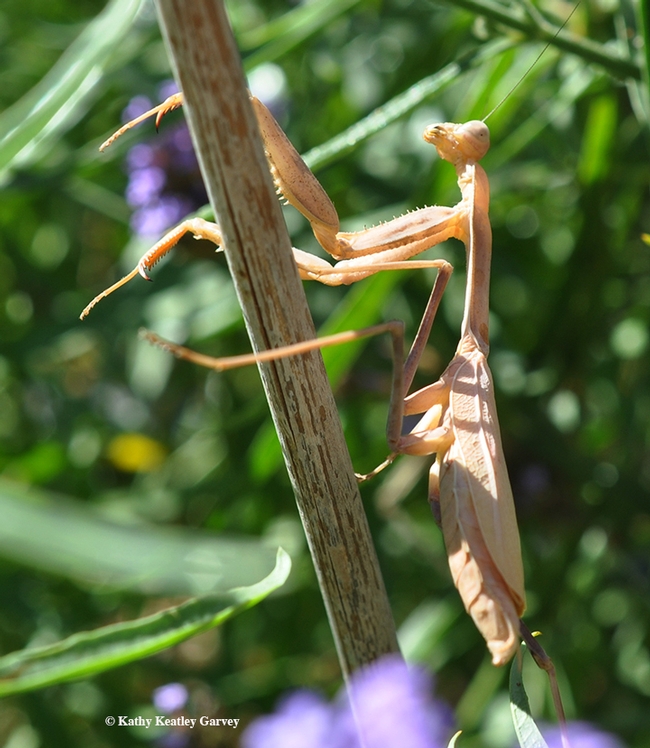
All gone and done. The praying mantis is finished with her meal. (Photo by Kathy Keatley Garvey)